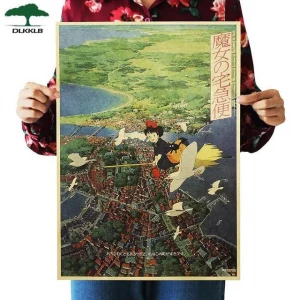We can all agree that Hayao Miyazaki’s films are magnificent works of cinematic art. However, Studio Ghibli’s beautiful aesthetics are truly complemented by the rhapsodic music that accompanies them, helping create those gentle, thoughtful, and nostalgic worlds we’ve all come to love.
Studio Ghibli is best known for its lingering feelings, which are frequently based on the dynamic, symphonic movement of Impressionist artists like Claude Debussy. Today, we explore the uniquely spectacular musical soundtracks from our top 10 favourite Miyazaki films.
1. “One Summer’s Day” from Spirited Away (2001)
2. “Merry Go Round of Life” from Howl’s Moving Castle (2004)
3. The Legend of Ashitaka Theme” from Princess Mononoke (1998)
4. “A Town with an Ocean View” from Kiki’s Delivery Service (1989)
5. “Path of Wind” from My Neighbor Totoro (1998)
6. “Bygone Days” from Porco Rosso (1992)
7. “The Girl Who Fell from the Sky” from Castle in the Sky (1986)
8. “Totoro” from My Neighbor Totoro (1998)
9. “On the Cliff by the Sea” from Ponyo (2008)
10. “Legend of Wind” from Nausicaä of the Valley of Wind (1984)
10. “Legend of Wind” from Nausicaä of the Valley of Wind (1984)
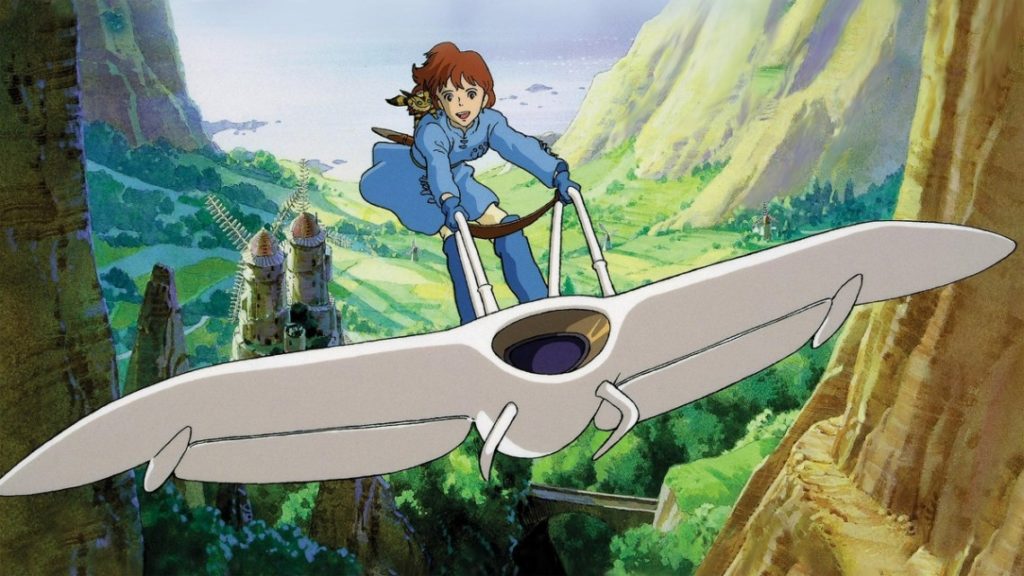
A testament to the ability of Studio Ghibli’s music to provide atmosphere, this song’s title could not be more appropriate. The song feels exactly like being in a valley of wind. It begins with the booming of timpani, like large imposing mountains as woodwinds and flutes Twitter rambunctiously in the distance.
All of a sudden, trumpets blare loudly before the song dips into a quiet clearing of piano and percussion that calls to mind the dripping of water in a cave. It then “exits the cave” going straight into a soaring sequence of strings and flutes with that classic Studio Ghibli orchestra sound. After a mysterious duet of the harp and xylophone, the song ends with the deep tremolo of the cello, showcasing the darker themes of the film such as war, rebellion, and apocalypse.
9. “On the Cliff by the Sea” from Ponyo (2008)
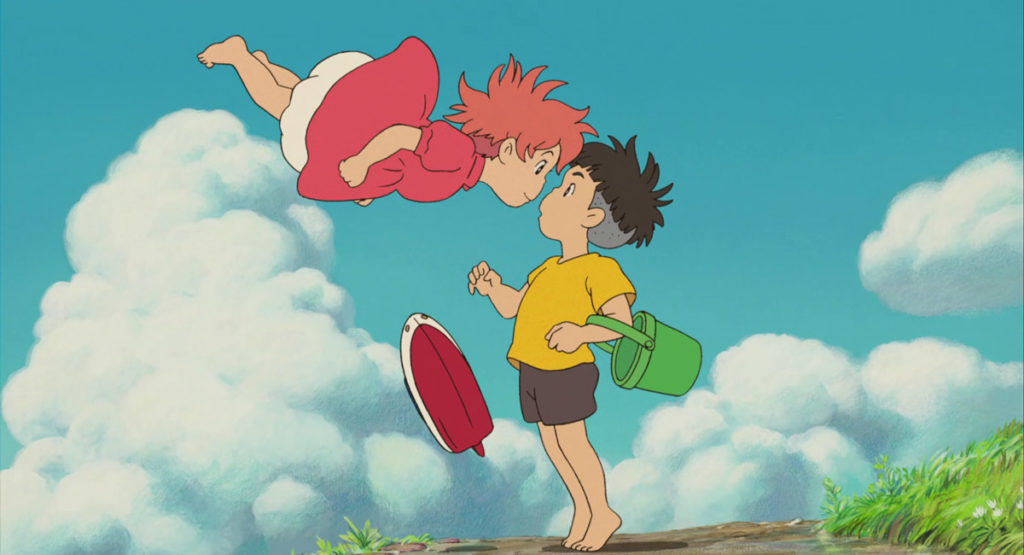
Definitely, the cutest entry on this list, “On the Cliff by the Sea” is a refreshing song sung by a little girl and a male singer. Its singsong chorus “Ponyo Ponyo Ponyo Sakana no ko” is catchy and easy to sing, just like the previous entry, and makes for a very adorable refrain. While nothing fancy, the song does switch it up in the middle by introducing some bagpipes in the instrumental break. It then returns to its rowdy tune and simple lyrics about appreciating food.
The song proves that Studio Ghibli doesn’t need an orchestra to make an iconic song. Its lyrics are very simple and all about enjoying the little things in life from the perspective of a child. Not to mention the delicious food in the film!
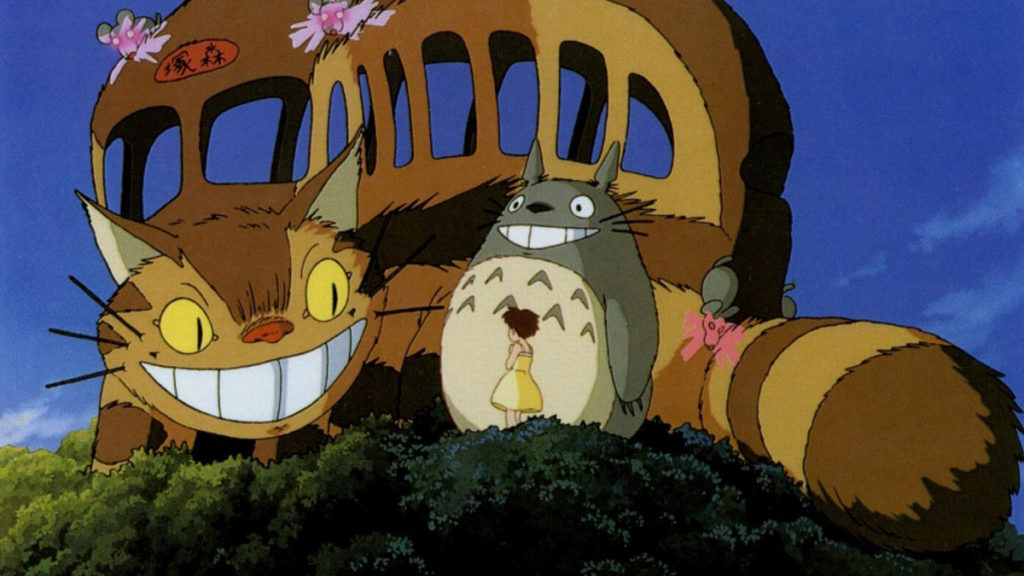
With its simple tune, and adorable chorus that goes “Totoro, Totoro! Totoro, Totoro!” This is one Studio Ghibli song that is sure to get stuck in your head for weeks to come. The song opens with a xylophone and lead singer Azumi Inoue’s stellar vocals, accompanied by a choir. All about the titular Totoro character and his friends, the lyrics talk about seeds, growing, and the forest as well as how to see him (hint: you only see him when you’re a child.)
Because of its cute simplicity, it may not be clear why this song is a masterpiece and even a tearjerker – at first glance. After all, it’s a children’s song that kids are sure to love. But a few years later, when those kids grow up, it becomes a tearjerker that can make anyone long to become a child again when life was so much simpler. It packs a punch and is rife with nostalgia.
With comments ranging from “The dislikes are all the people who had blurry eyes from crying and missed the like button” to “I can’t listen to this song without crying because I miss my childhood and the world is so stressful,” it is a powerful and nostalgic song wrapped in a kawaii childlike package full of wonder and imagination.
7. “The Girl Who Fell from the Sky” from Castle in the Sky (1986)
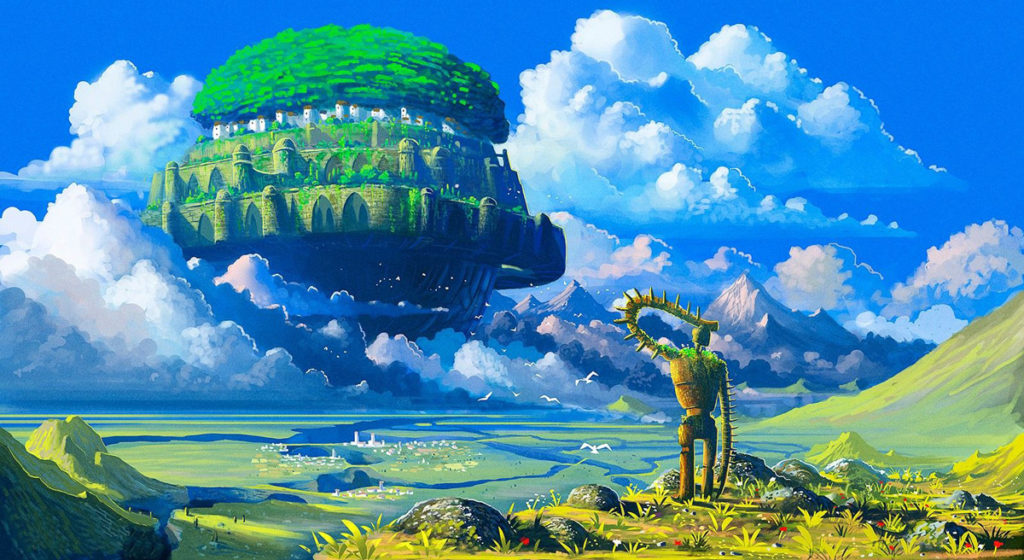
“The Girl Who Fell from the Sky” begins with a few curious notes on the piano accompanied by the violin, followed by a quirky flute melody. It then launches into full orchestral magic with sweeping strings and evocative brasswinds, bringing life to an expansive world, full of grandeur and adventures. This song accompanies the moment that the eponymous Castle in the Sky comes into view, making the song equal parts imposing and iconic.
The piece masterfully soars and dives, with amazing dynamics to push its musical motifs forward. For example, the main orchestra melody is followed by a piano section that sounds like raindrops on a spring day. One of the latter sections features a triumphant blast of glorious woodwinds that fades into a lilting violin, evocative of the peaceful countryside.
6. “Bygone Days” from Porco Rosso (1992)
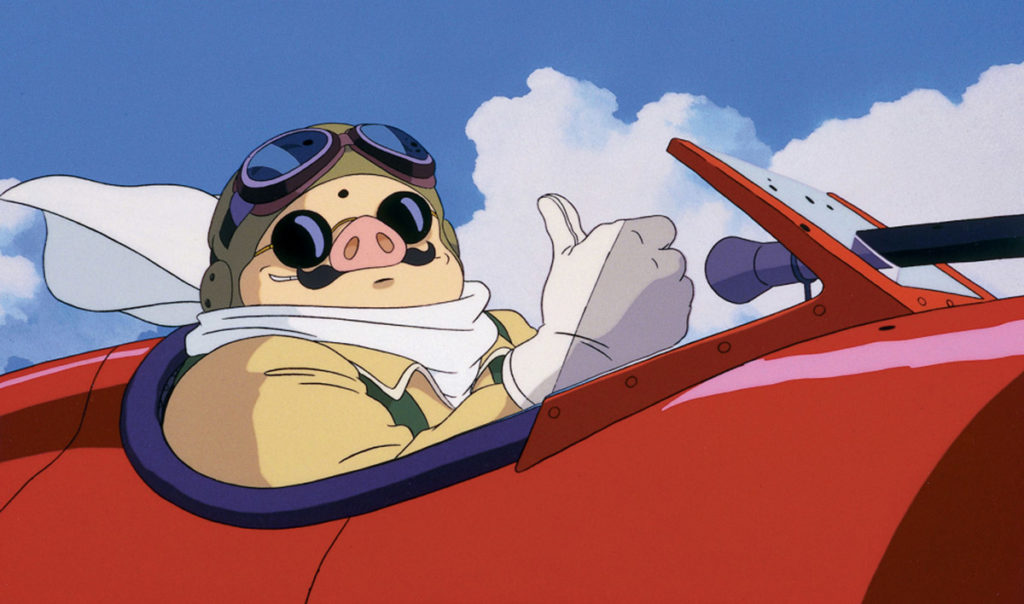
The introduction of “Bygone Days” sounds like an elegant lunch at a seaside restaurant in a town by the ocean or eating bolognese pasta with a friend. Starting with a simple piano theme, the piece from Porco Rosso begins with elegance and charm before turning into a beautiful ballad of days peppered with nostalgia.
Jazz and trumpets arrive in the middle section, accompanied by cymbals and snare drums as it fizzles into a rousing marching band theme. The piece is heavily influenced by the film Casablanca, which has similar soulful jazz music and a fittingly triumphant score to boot. By its last few seconds, it returns to its simple piano theme, like the end of an adventure
The piece feels like a trip down memory lane, from sombre remembrance to fully reliving the good ol’ glory days, then falling back down into reality as you realize those days will never truly come back.
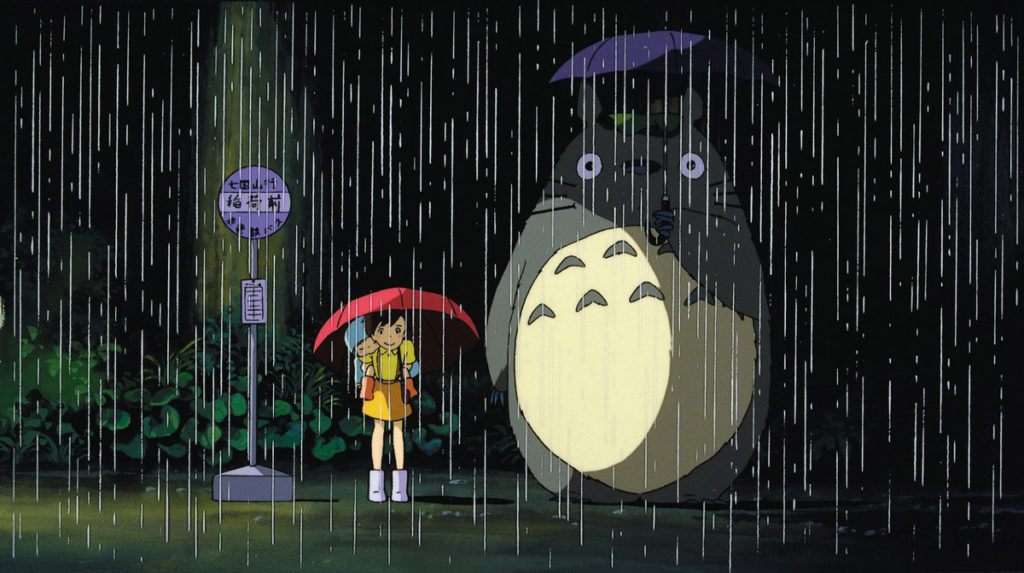
Considered a musical masterpiece, “Path of the Wind” begins with a sing-song xylophone and wind chimes, establishing the innocence and childlike energy of the film “My Neighbor Totoro.” It then adds some fluttering woodwinds, creating the atmosphere of a magical forest. All of a sudden, the piece takes a dramatic turn to a lilting violin, singing with sentimental emotion and heart.
As if replying to it, a piano repeats the melody, then both instruments join together in a glorious duet eventually joined by the brasswinds, then the entire orchestra. The piece soars with emotion and ascends to a billowing climax before dropping the listener into a comforting bed of cutesy flutes, plucked strings, and maracas, just like how the sisters landed on Totoro’s belly on a warm, sunny day.
The piece enters its final section with glorious trumpets in the lead as new melodies intertwine with the main theme, culminating in a rousing ending that fades into silence. One of our fav songs from Studio Ghibli films!
4. “A Town with an Ocean View” from Kiki’s Delivery Service (1989)
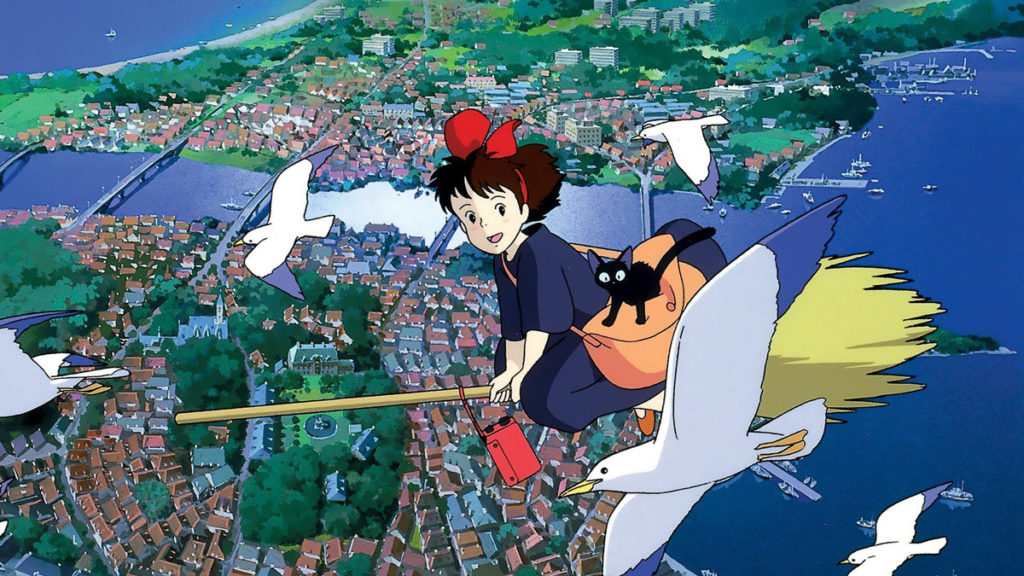
The song’s intro begins grand and lofty like flying through the air, then turns into a series of cutesy notes on plucked strings that serves as the main musical motif. Sweeping the listener off their feet, the song crescendos into a rich, full orchestral version of the intro and the main theme before transitioning into a boisterous village-like theme with trumpets, tambourines, and merrymaking!
As quickly as it arrived there, the song ends with the brasswinds blowing out a final closing chord. “A Town with an Ocean View” is much like the movie itself, where it celebrates life’s moments: both the marvellous and the ordinary.
3. The Legend of Ashitaka Theme” from Princess Mononoke (1998)
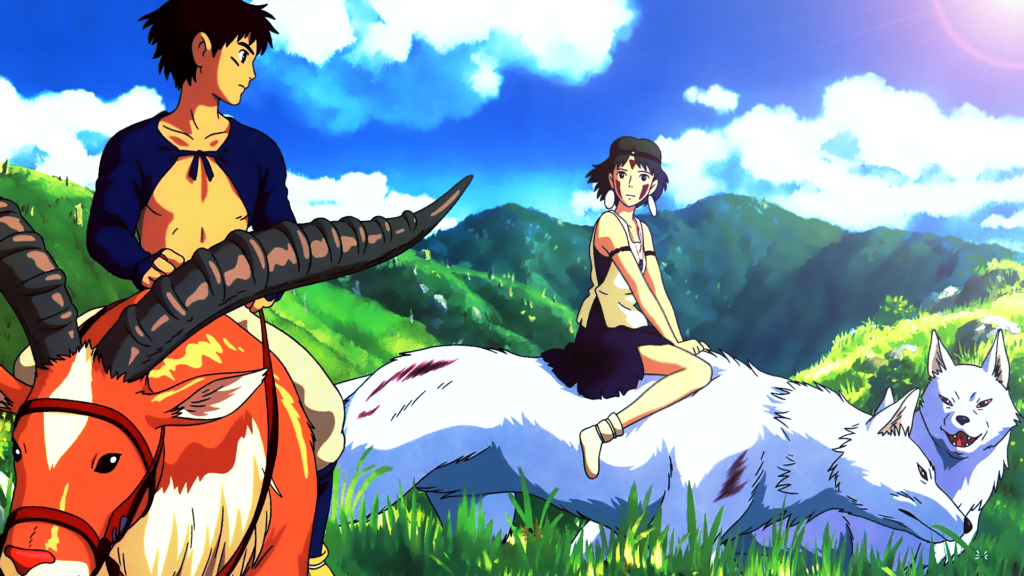
Beginning with the soft sound of distant taiko drums, “The Legend of Ashitaka” gradually introduces a few strings and woodwinds, then inserts a mysterious yet enchanting melody – like a Japanese painting unfurling itself onto a canvas. With a crash of cymbals, the song launches itself into a heroic theme of adventures and trials, just as Ashitaka and the eponymous Princess Mononoke do in the film.
It mellows out a bit towards the middle section, as still as the calm before the storm before going back to its adventurous sound, evocative of horseback riding in the mountains while fighting magical creatures.
Its orchestration is somewhat reminiscent of the soundtracks of Chinese war films like “Mulan” and fantasy films such as “Legend of the White Snake” which adds layers to the atmosphere it contributes to the movie. It ends on a sustained note, mellifluous and mesmerizing like the magical creatures in the film.
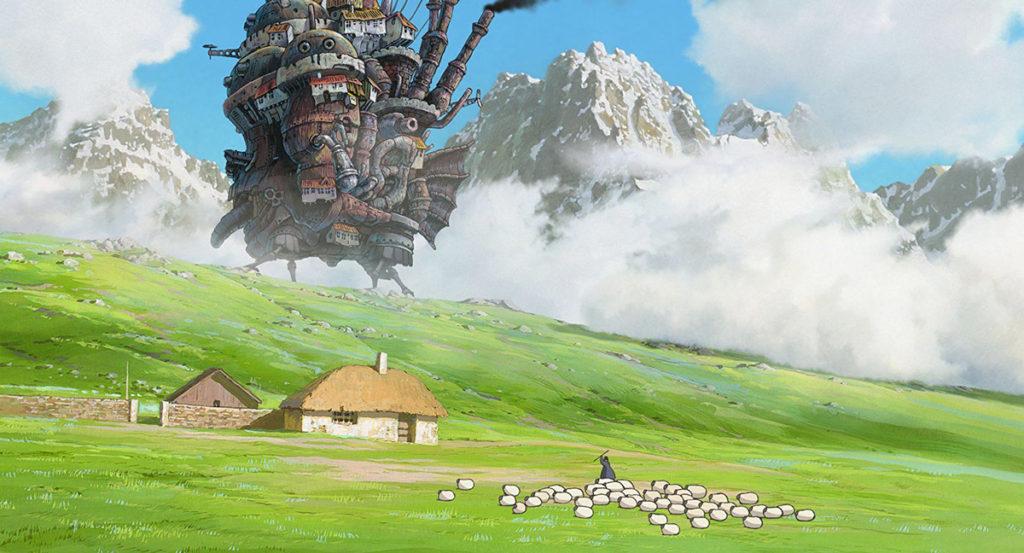
The piece starts with a few simple notes on a piano before launching into the song’s beautiful main melodic theme. It then picks up the pace as stringed instruments join the fray, creating a whimsical masterpiece of music that is instantly recognizable and iconic. Joe Hisaishi’s masterful use of the orchestra in his composition helps create a magical atmosphere for the movie it features in Howl’s Moving Castle.
With themes of adventure, mystery, and romance; the strength of the score is that it is able to take the listener on a musical journey through ups and downs, magical landscapes, and the perils that the characters face. At times, listening to the song feels like falling through the air! The sweeping main motif appears throughout the film’s other musical pieces, offering sad reprises, hopeful crescendos, and everything in between, echoing that Hayao Miyazaki’s sentiments that “life is worth living.”
The song’s grand finale features a timpani and grand orchestral flourishes, evocative of a royal waltz, before spiralling into a quirky “Alice and Wonderland-like string section that feels like falling into a new world. Unexpectedly, it then ends on a soft, calming note and comes to a close. With both steampunk technology and magic present, “Merry Go Round of Life” definitely has a Dark academia ambience that will please many more generations to come.
1. “One Summer’s Day” from Spirited Away (2001)
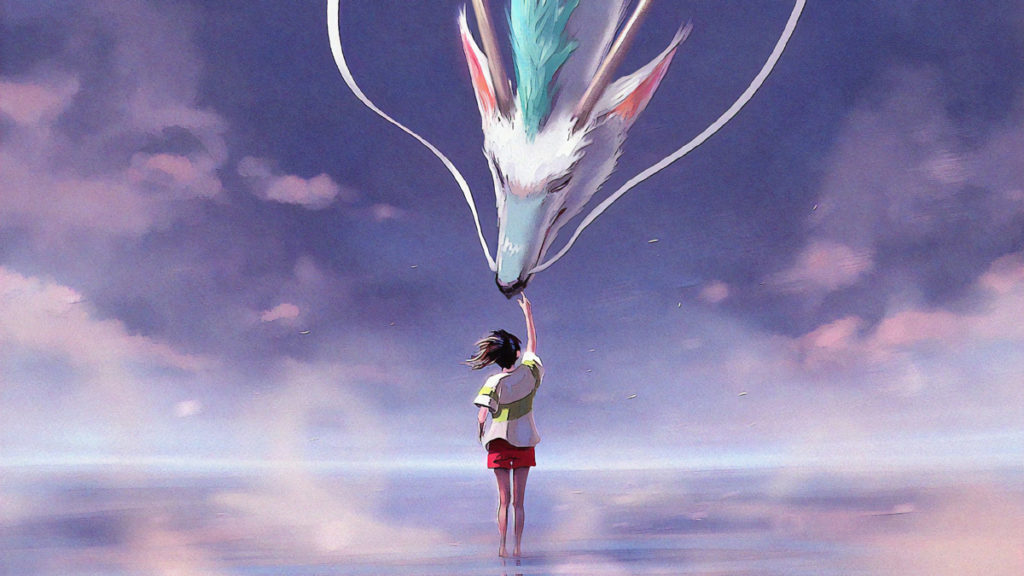
With Spirited Away as Hayao Miyazaki’s masterpiece, it’s no wonder that the main theme from the film is widely considered the best musical piece from Studio Ghibli.
While “One Summer’s Day” does not have the grand orchestral sound of some of the previous songs on this list, listening to the first few seconds immediately pulls on your heartstrings. With its sentimental piano, the melody is simple but nostalgic and heartfelt, like the warm steamed buns that Chihiro enjoys in the film.
Hearing the beautiful piano, it is easy to imagine the events of the film in your head: the bathhouse, the spirits, and the adventures that the characters go through in the movie. To summarize, it’s just like the anime song that will make you think of your Nakama (friends). The song ends on a few piano notes – an experience as ephemeral as Chihiro’s adventure in the spirit world.
Perhaps the piece sounds so sad because it feels like a goodbye. Goodbye to a world that you’ve just stumbled into, goodbye to friends and precious memories because time marches on and the past eventually turns into nothing. The song captures beauty and charm in the temporal and fleeting, which is its secret in drawing out bittersweet feelings within one’s heart. As Haku says in the movie, “Now go and don’t look back.”












































